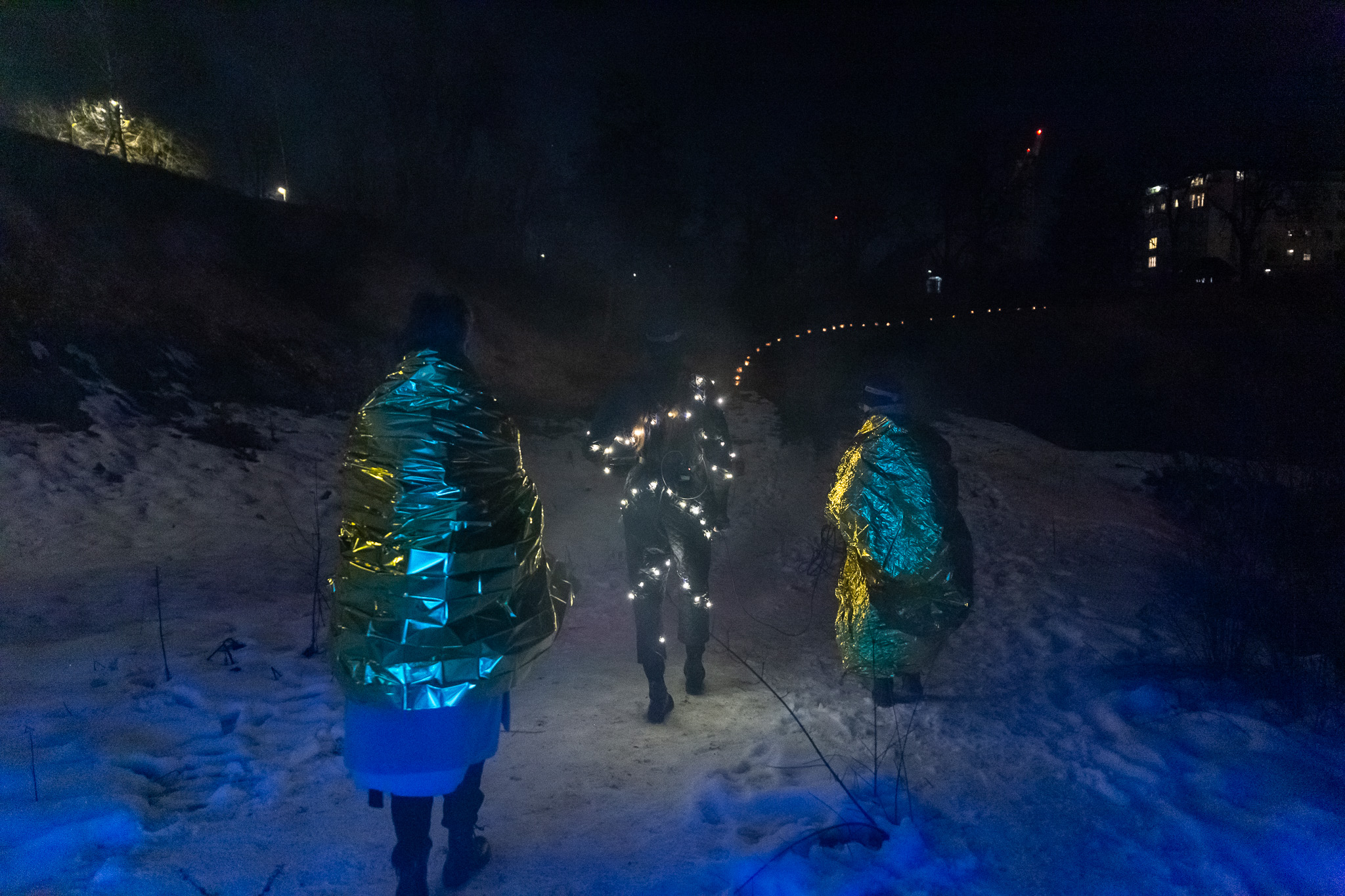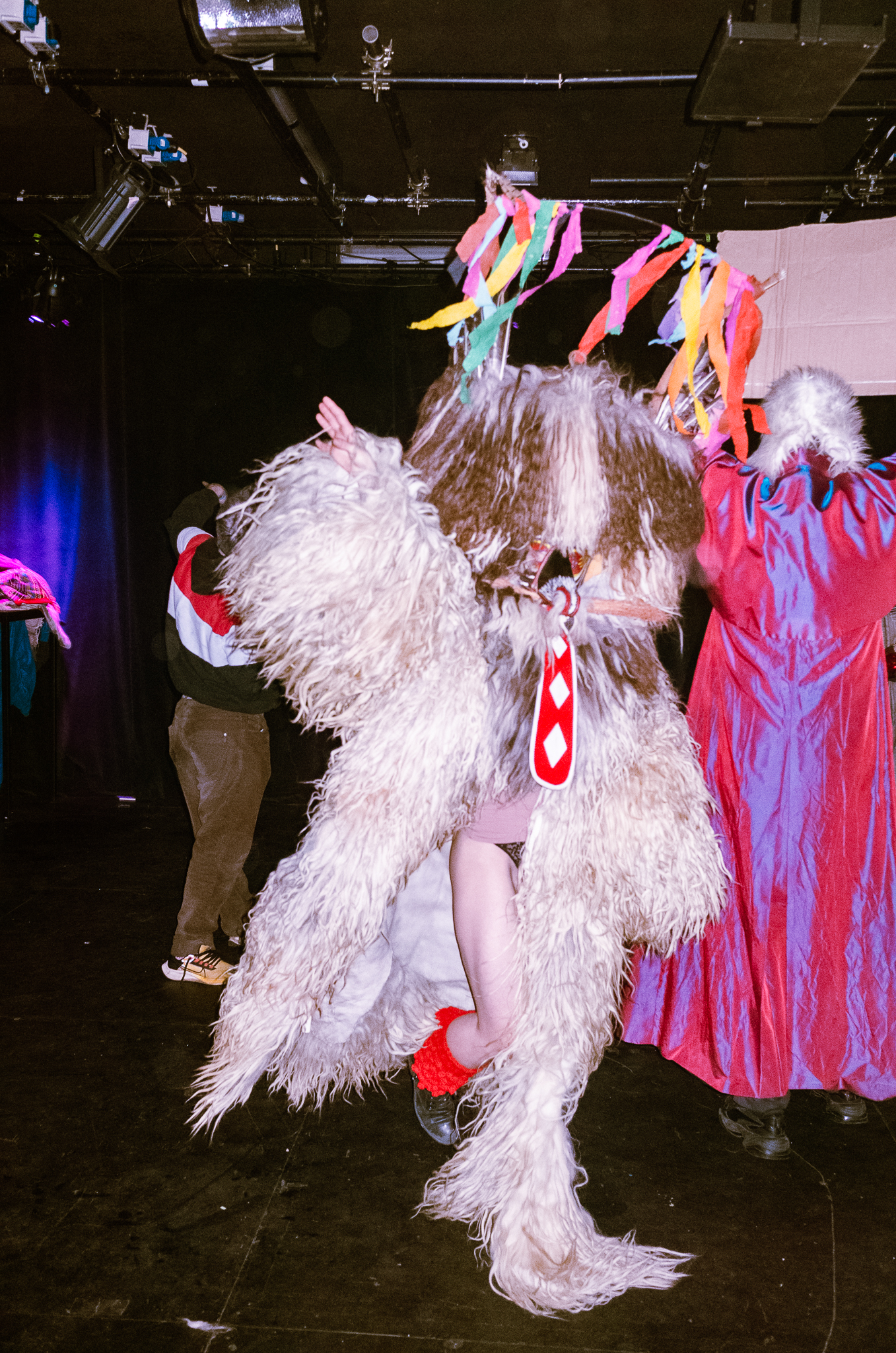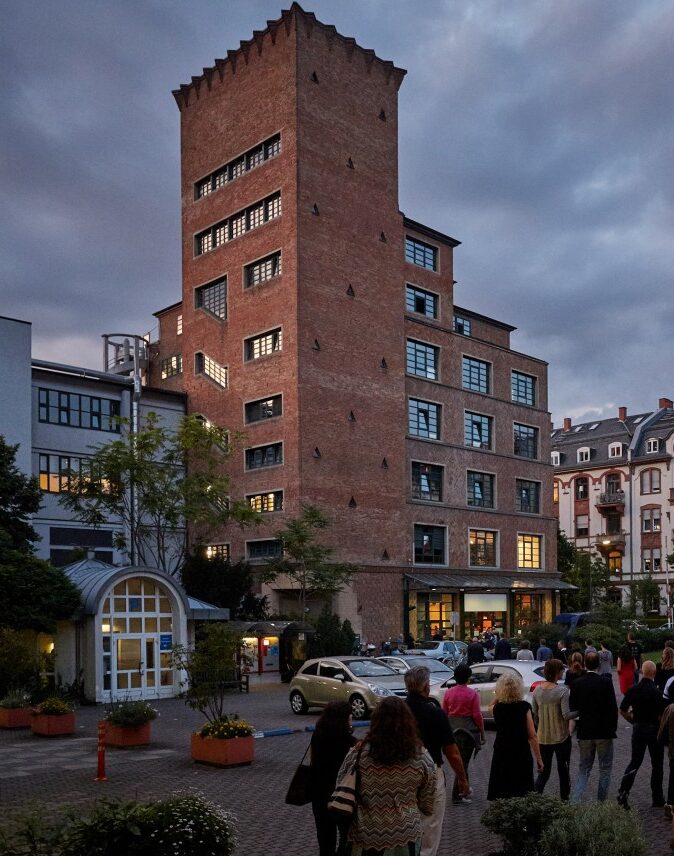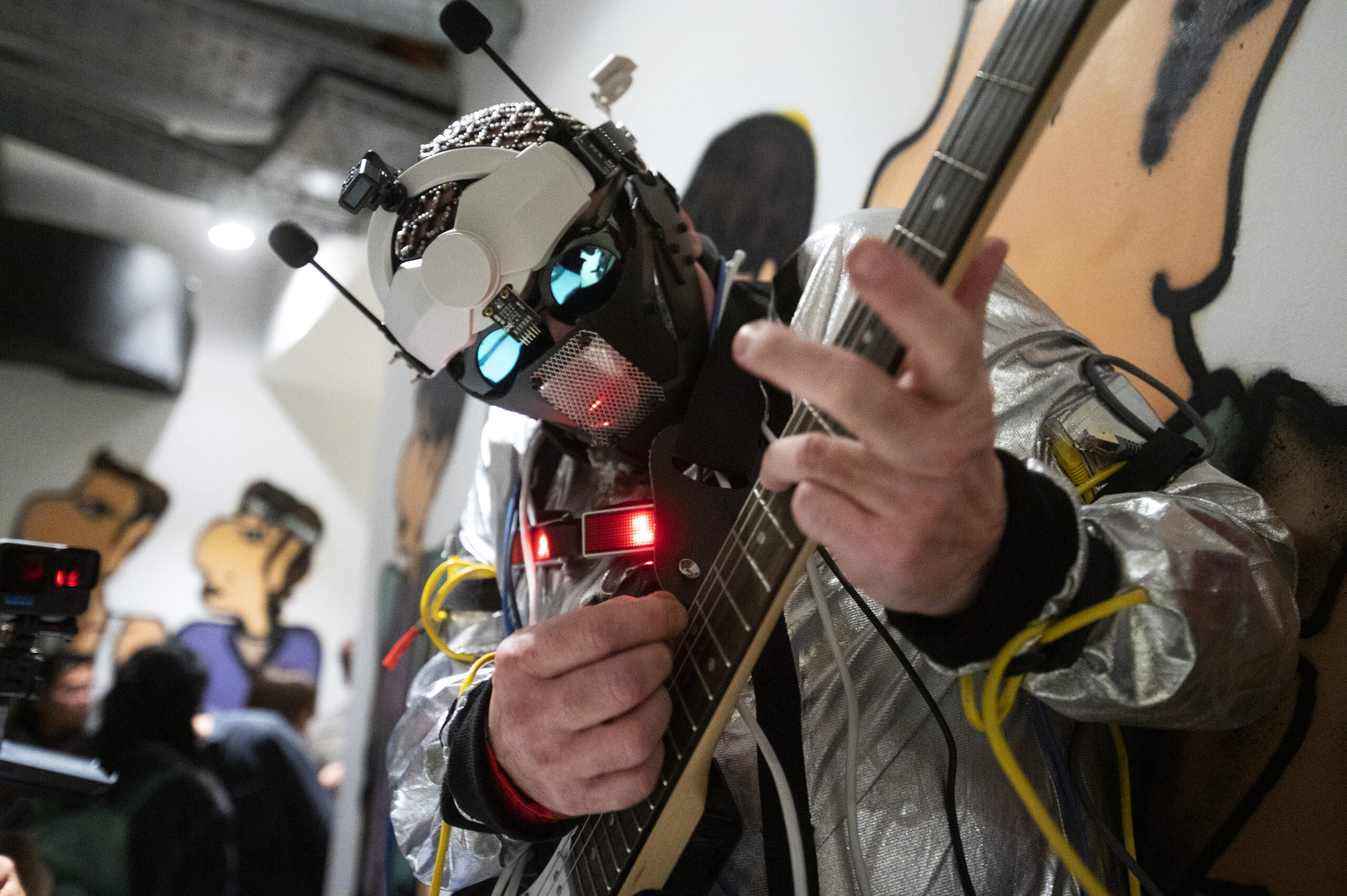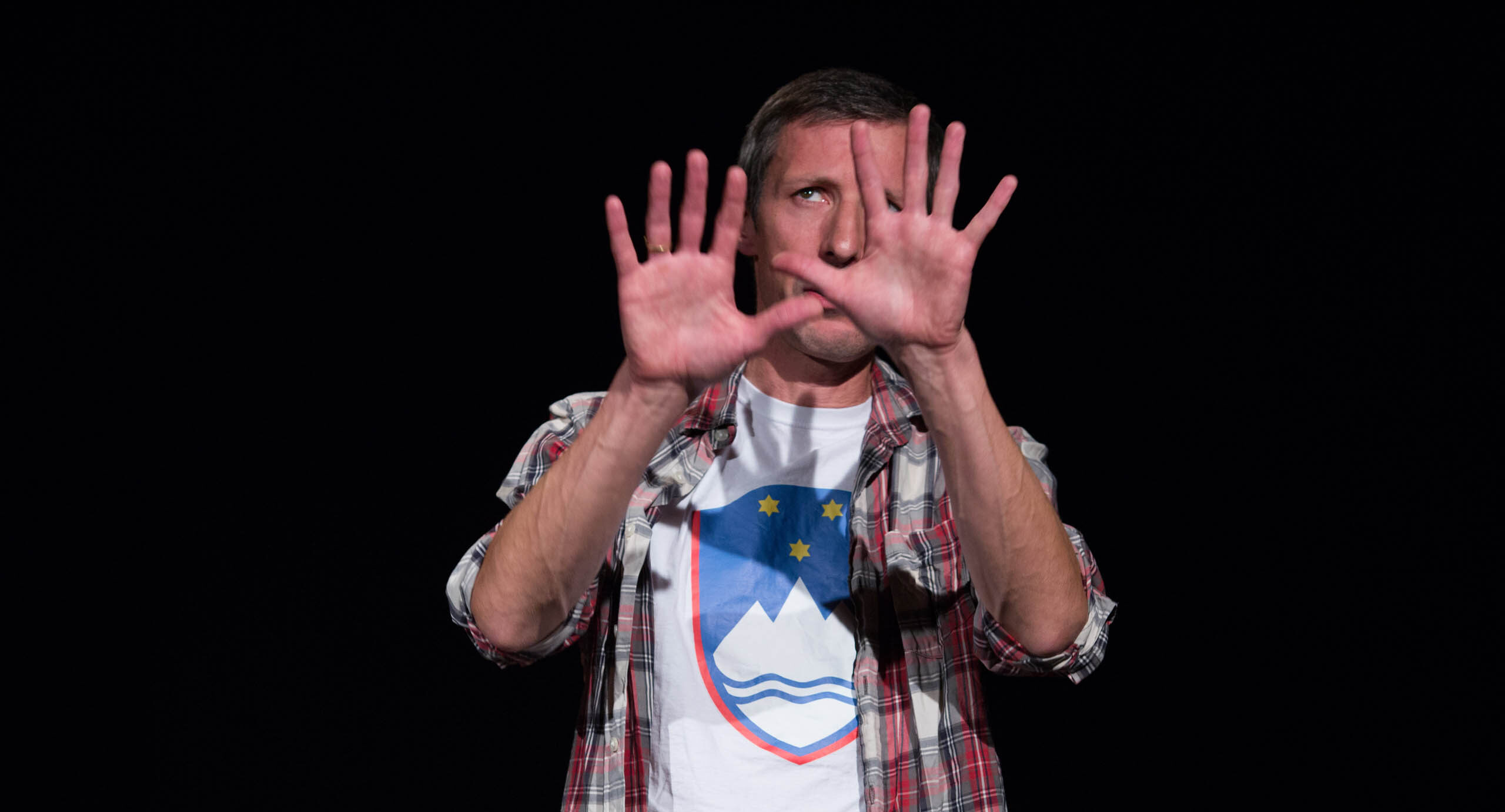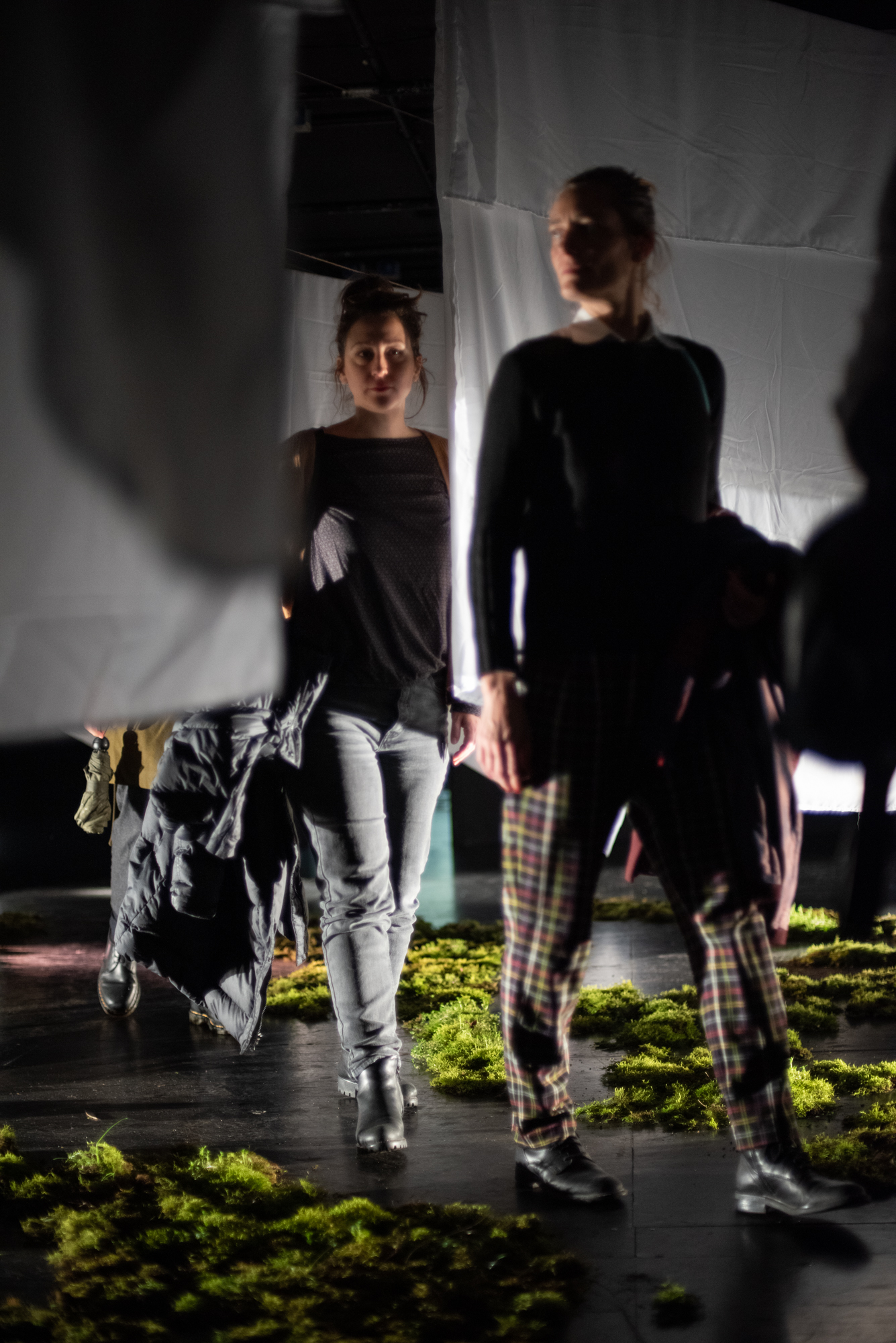Nina Meško and Lana Kariž Meško: Preschool for Diving

”The palimpsests of molecules need not be overwritten, for machines make once-ephemeral words persist: they collect in gutters; they pile up and require sweeping; they hang in air like morning fog.” – Dexter Palmer, The Dream of Perpetual Motion.
In Preschool of Diving, Nina Meško (mother), who entered the Slovenian contemporary dance scene in the 1990s as the author of several experimental dance performances and has been working in the field of contemporary dance for the last 17 years as a pedagogue, promoter and independent dance consultant, and Lana Kariž Meško (daughter) will delve into Nina’s “disorganised” dance archive. Lana, herself active in the field of contemporary dance, is not very familiar with her mother’s dance oeuvre, having never seen it either live or on video.
With Preschool of Diving, the two artists will explore a number of questions. How is dance stored in the body and transmitted between bodies? How is the work activated through a new body? These are questions of the originality and failure to reactivate a dance work. They are questions about shared stories, rituals, dances and information that remain in the body as the seat of memory, and how sensory, emotional or cognitive experiences are stored in movements, gestures, rhythm.
- FRIDAY, 29. 9. 2023, 20.00–21.00 , KINO ŠIŠKA – Komuna Hall
Theatre performance
Authors: Nina Meško in and Lana Kariž Meško; in collaboration with Petra Veber and Jasmina Založnik
Production: Maska Ljubljana
Jaka Bombač
One of the inevitable consequences of the planned postponement of the implementation of work, which we, today, in a more general domain like to call procrastination, is the possibility that the work will change in the meantime. On the one hand, this ever-present possibility has a feedback effect on the process, which commits itself to the accommodation of deviations; on the other hand, over time, the author layers an abundance of reference points that become a kind of private archive, a kind of bond with herself through the diachronic structure of continuities and breaks.
Nina Meško’s dance and choreographic work is characterised by a questioning of the concept of choreography as the meaning of dance material, which is expressed, on the one hand, in the process of ‘exposing the context of dance (pre)production’ (as Rok Vevar wrote about her performance Stanje stvari (The State of Things)) and, on the other, in the tendency to practise the inherent choreographic nature of social life. In her proposal, Meško cites the French sociologist and anthropologist Marcel Mauss who, in his Techniques of the Body (1935), showed that physical habits are shaped by culture and society, ‘although in many circumstances they are practised, transmitted, and perceived as natural’, from which it follows that the body can be understood as a kind of ‘storehouse of its history (movement)’.
This private archive was initially planned, in 2006, as a project that would expand the author’s archive of conversations with choreographers, dancers, and other performance artists. The archive began emerging spontaneously during her stay in Vienna at the Tanzquartier residency programme, where she recorded 12 open-form conversations. In 2023, her interest in the heterogeneity of dance practices is turning inward, so to speak, as she collects material from her own dance performances (photos, notes, music, reviews) to hand over to her daughter, an aspiring dancer, who ‘knows almost nothing’ about Nina’s dance work, having never seen her dance, live nor on video, and whose interpretation in dialogue with Nina will be a potential performance.
In a certain sense, the archive of conversations thus becomes a conversation with the archive, but one whose course spontaneously (and reversely) enriches the archive of conversations and, through this double movement, functions symbolically as a dialogue between the present and the past. The emphasis has started shifting from the intercorporeal to the intracorporeal, from the question of the function of dance and choreography in the formation of a community, to the more intimate question of ‘storing experience in movements, gestures, and rhythm’.












